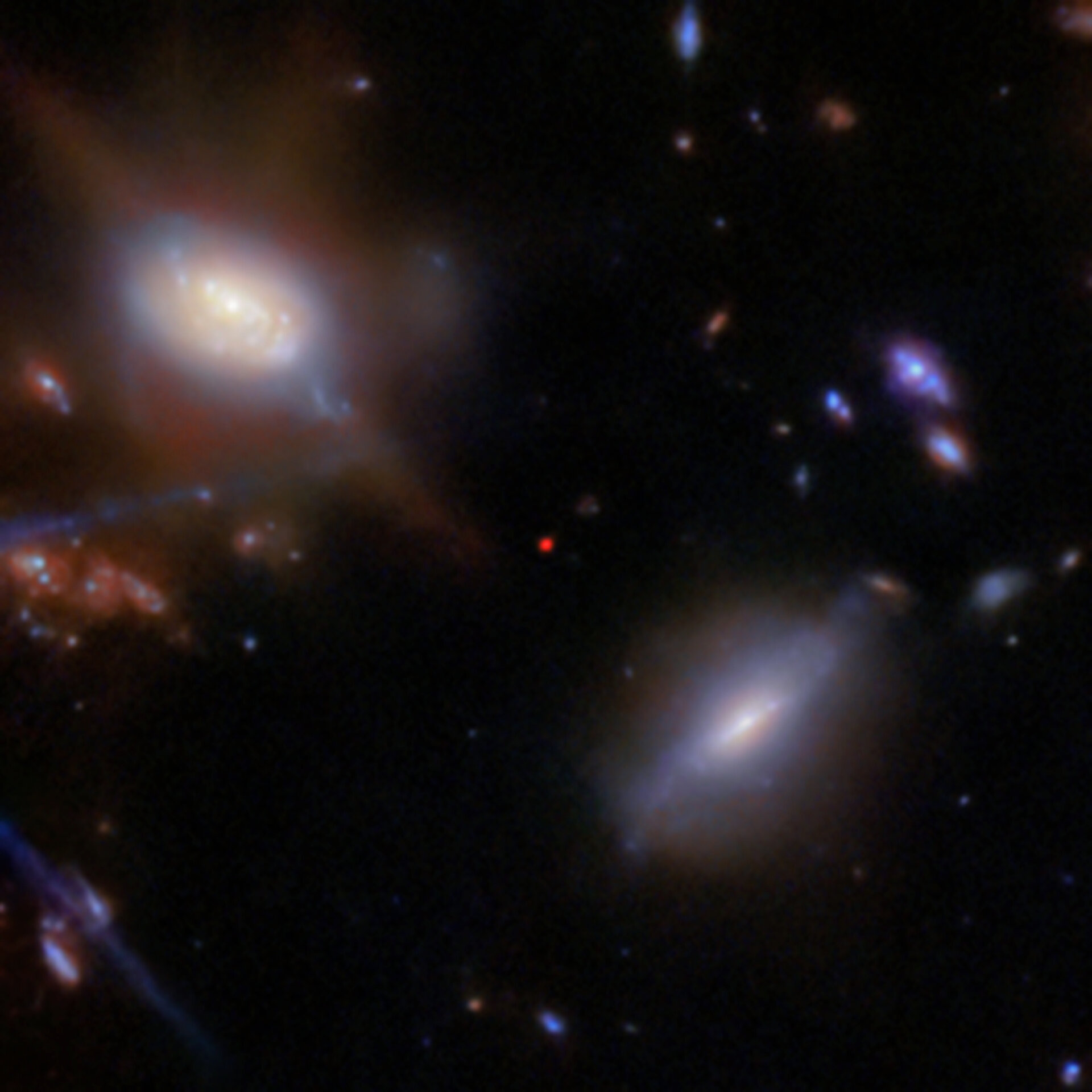Using the James Webb Telescope (JWST), an international team of astronomers has detected a bright emission of hydrogen from a galaxy that existed at the dawn of the Universe. This unexpected finding raises the question of how this light could have broken through the thick shroud of “fog” that filled space at that time.

One of JWST’s main objectives is to study the distant past of our Universe — the era when the first galaxies formed after the Big Bang. During the search, the telescope has already managed to detect a number of record distant galaxies.
JWST’s extraordinary sensitivity to infrared radiation also opens up entirely new possibilities for studying the so-called cosmic dawn period. It is called the era of the early Universe, when it was shrouded in a thick “fog” consisting of clouds of neutral hydrogen. It was eventually dissipated by the radiation from the first stars through a process called reionization. It is believed to have ended about a billion years after the Big Bang.
However, this timeline has now been called into question. During the observations, JWST managed to detect the incredibly distant galaxy JADES-GS-z13-1. After measuring and rechecking its redshift, astronomers found it to be 13.0. This corresponds to a galaxy appearing just 330 million years after the Big Bang. But there was an unexpected feature: one specific, very bright wavelength of light, identified as Lyman-α emission, emitted by hydrogen atoms. This radiation was much stronger than astronomers had anticipated at such an early stage in the Universe’s evolution.

According to scientists, before and during the era of reionization, the vast amount of neutral hydrogen fog surrounding the galaxies blocked any energetic ultraviolet radiation they emitted, like a filter. Until enough stars formed to ionize hydrogen gas, no light, including Lyman-α emission, could leave these nascent galaxies and reach Earth. The discovery of JWST is therefore of great importance for understanding the early Universe.
The source of the radiation is not yet known but it may be the first light from the earliest generation of stars to form in the Universe. It may have created a large bubble of ionized hydrogen that surrounded GS-z13-1. Another possibility considered by scientists is a very active galactic nucleus that contains one of the first supermassive black holes.

Scientists plan further observations of GS-z13-1 to learn more about the nature of this galaxy and the origin of its emission. Whatever this galaxy is hiding, it is sure to open a new frontier in cosmology.
According to ESA


